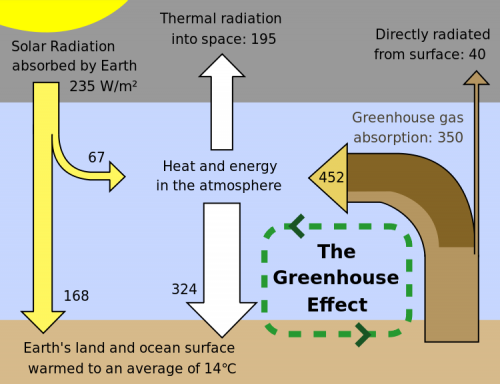CO2 warming effects felt just a decade after being emitted

It takes just 10 years for a single emission of carbon dioxide (CO2) to have its maximum warming effects on the Earth.
This is according to researchers at the Carnegie Institute for Science who have dispelled a common misconception that the main warming effects from a CO2 emission will not be felt for several decades.
The results, which have been published today, 3 December, in IOP Publishing's journal Environmental Research Letters, also confirm that warming can persist for more than a century and suggest that the benefits from emission reductions will be felt by those who have worked to curb the emissions and not just future generations.
Some of these benefits would be the avoidance of extreme weather events, such as droughts, heatwaves and flooding, which are expected to increase concurrently with the change in temperature.
However, some of the bigger climate impacts from warming, such as sea-level rise, melting ice sheets and long-lasting damage to ecosystems, will have a much bigger time lag and may not occur for hundreds or thousands of years later, according to the researchers.
Lead author of the study Dr Katharine Ricke said: "Amazingly, despite many decades of climate science, there has never been a study focused on how long it takes to feel the warming from a particular emission of carbon dioxide, taking carbon-climate uncertainties into consideration.
"A lot of climate scientists may have an intuition about how long it takes to feel the warming from a particular emission of CO2, but that intuition might be a little bit out of sync with our best estimates from today's climate and carbon cycle models."
To calculate this timeframe, Dr Ricke, alongside Professor Ken Caldeira, combined results from two climate modelling projects.
The researchers combined information about the Earth's carbon cycle—specifically how quickly the ocean and biosphere took up a large pulse of CO2 into the atmosphere—with information about the Earth's climate system taken from a group of climate models used in the latest IPCC assessment.
The results showed that the median time between a single CO2 emission and maximum warming was 10.1 years, and reaffirmed that most of the warming persists for more than a century.
The reason for this time lag is because the upper layers of the oceans take longer to heat up than the atmosphere. As the oceans take up more and more heat which causes the overall climate to warm up, the warming effects of CO2 emissions actually begin to diminish as CO2 is eventually removed from the atmosphere. It takes around 10 years for these two competing factors to cancel each other out and for warming to be at a maximum.
"Our results show that people alive today are very likely to benefit from emissions avoided today and that these will not accrue solely to impact future generations," Dr Ricke continued.
"Our findings should dislodge previous misconceptions about this timeframe that have played a key part in the failure to reach policy consensus."
More information: 'Maximum warming occurs about one decade after a carbon dioxide emission'(2014 Environ. Res. Lett. 9 124002. iopscience.iop.org/1748-9326/9/12/124002/article
Journal information: Environmental Research Letters
Provided by Institute of Physics

















